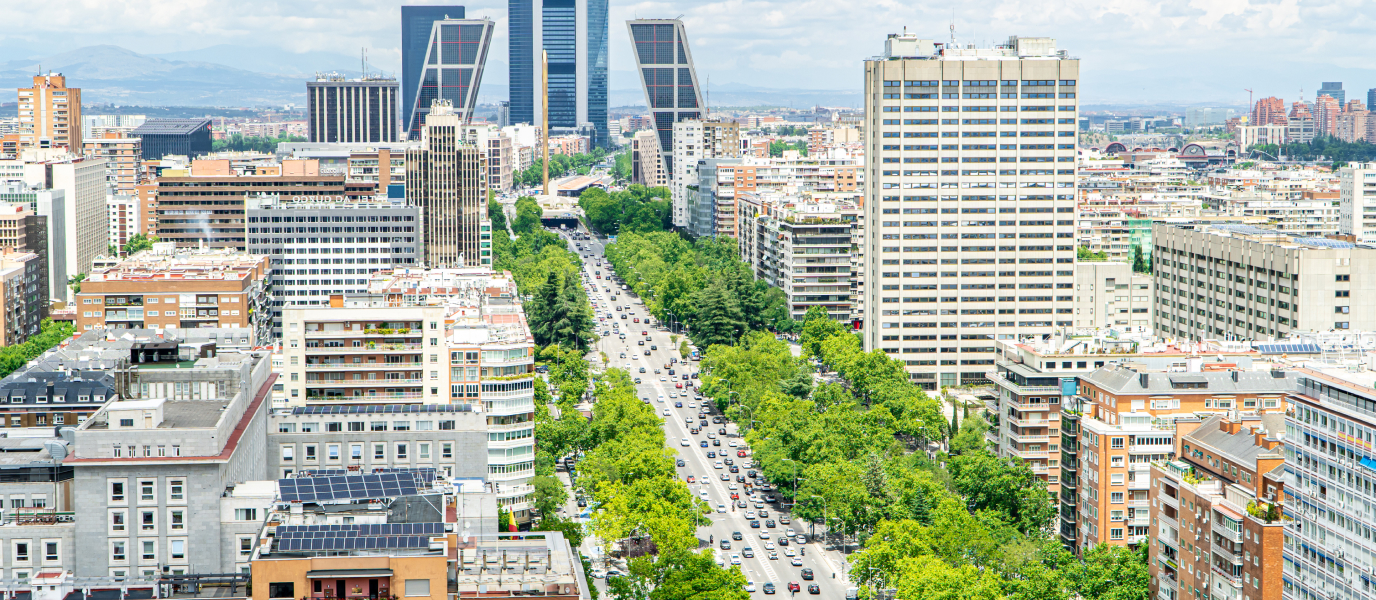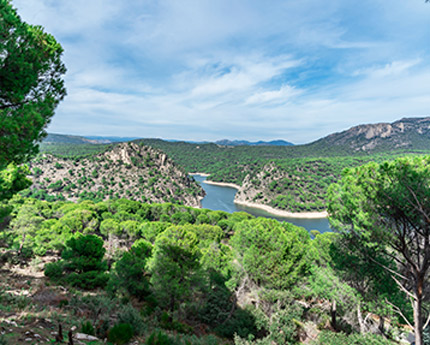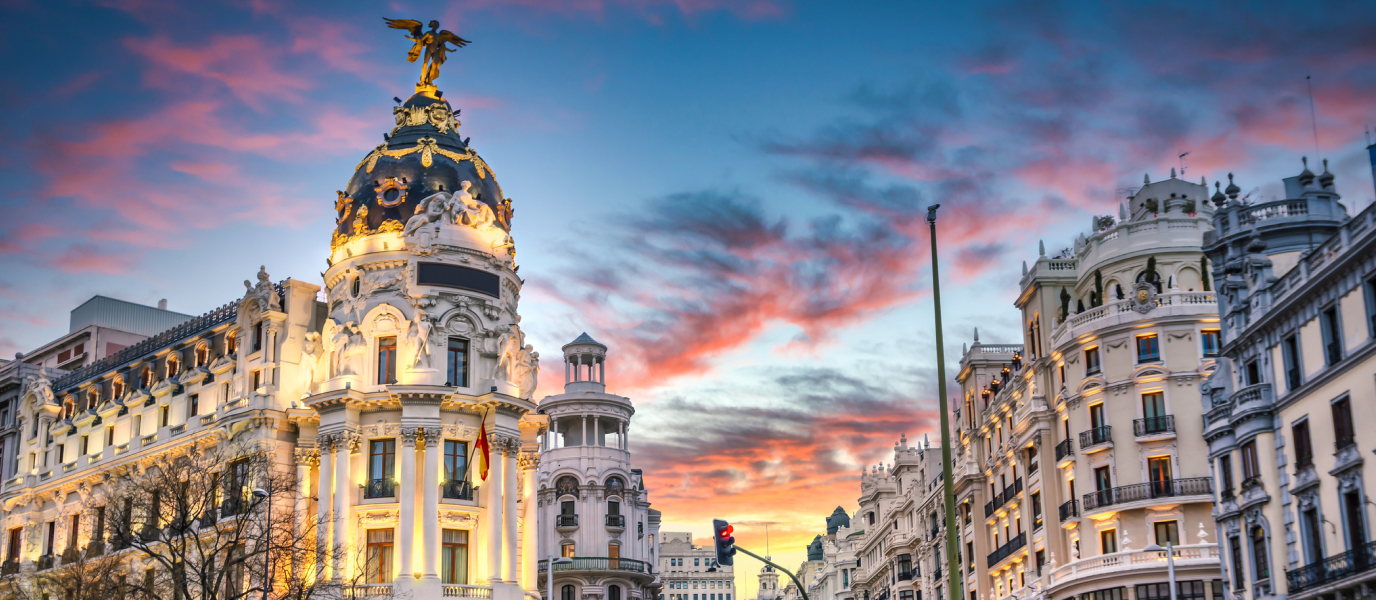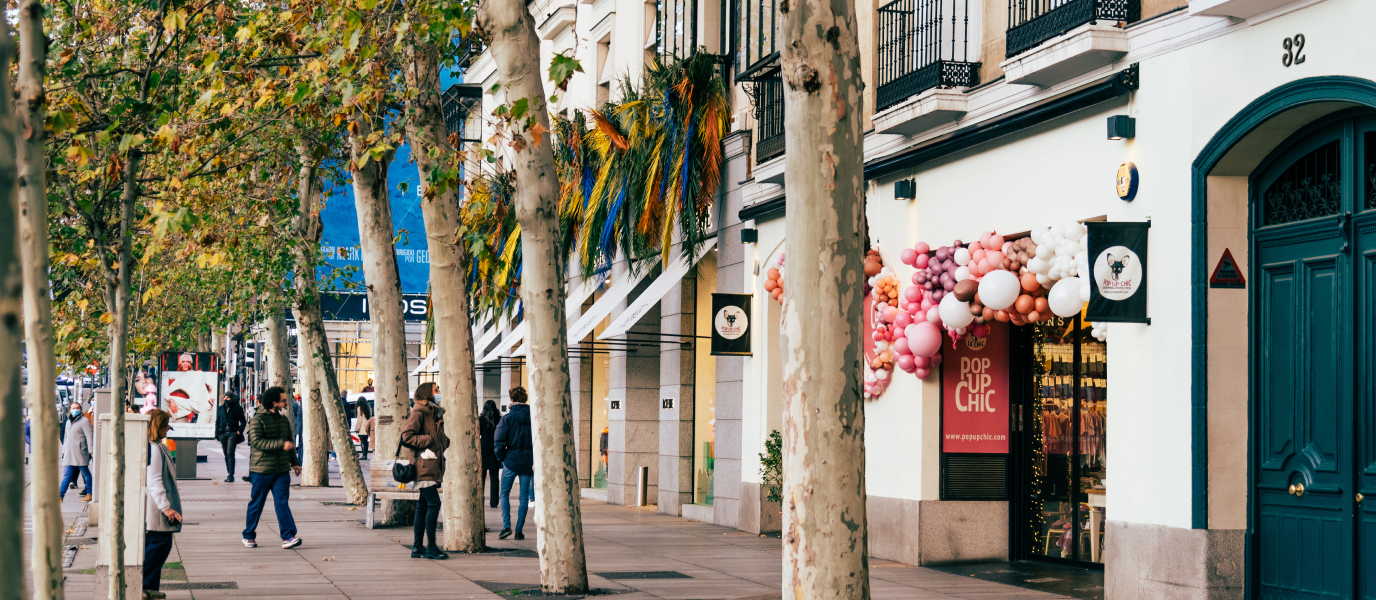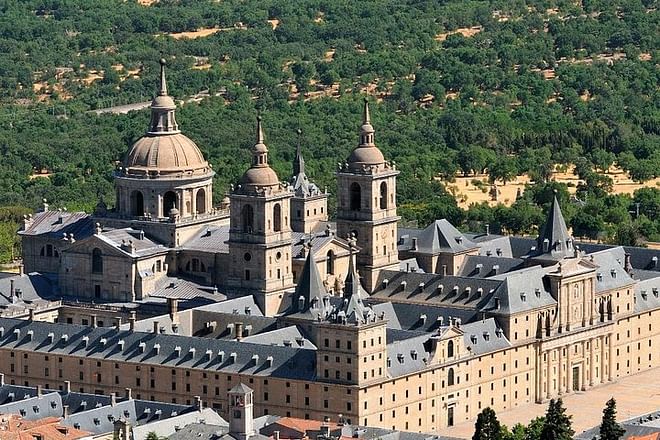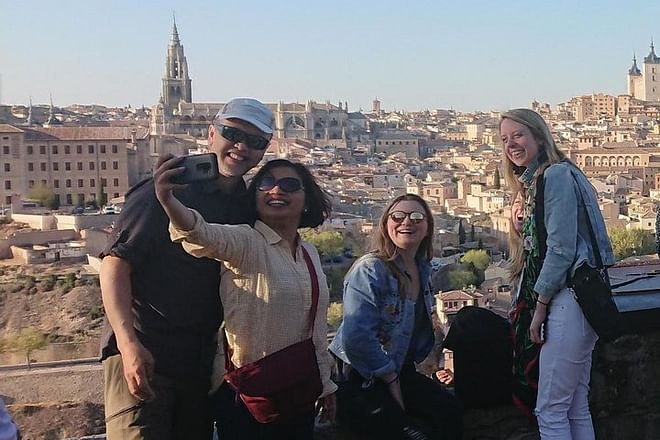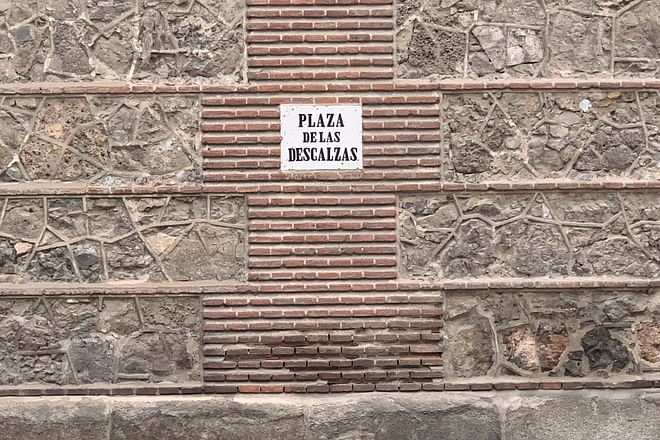The capital’s business and financial district in the north of Madrid extends around the long and busy Avenida de la Castellana, full of hurrying businessmen in suits and ties. Starting at Plaza de Colón, it takes in Nuevos Ministerios station, the AZCA financial complex and the famous Santiago Bernabéu stadium (where Real Madrid play) before coming to Plaza de Castilla, the main hub of the district of Chamartín, which is home to one of the most iconic images of Madrid. Known as Torres Kío [Kío Towers]—officially Puerta de Europa, or Gate of Europe—they consists of two twin skyscrapers standing 114 metres tall that lean in to one another at a 15-degree angle on the northern side of the square. However, Plaza de Castilla is much more than just the two towers; the enormous circular expanse is also home to a Francoist monument, an obelisk by the renowned architect Santiago Calatrava and a cultural exhibition centre set in an unusual location, as well as an underground bus-Metro interchange station, one of the largest and busiest in Madrid.
The Kío Towers: the first leaning skyscrapers in the world
The towers were the first skyscrapers to be built in Madrid and represent one of the city’s most iconic images, as well as being the gateway to the final stretch of Avenida de la Castellana, home to the tallest and most modern skyscrapers in the capital. The towers occupy 10th and 11th spot in terms of the tallest buildings in Madrid, just behind the first four in the ranking: the Cuatro Torres Business Area, built between 2004 and 2009 and standing at between 224 and 249 metres.
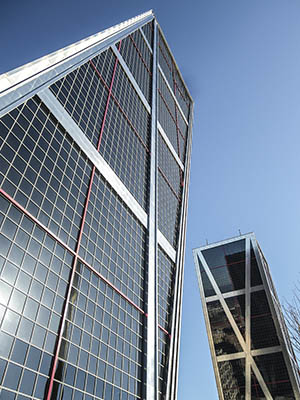
The Kío Towers, in turn, were built in the 1990s, becoming the first leaning skyscrapers in the world in 1996. Designed by two important names in post-modern architecture, the Americans Philip Johnson and John Burgee, they take their more commonly used name from the Kuwaiti company Kuwait Investment Office (KIO), the project’s developers. The American company Leslie E. Robertson, also behind the tragically disappeared World Trade Center in New York, was responsible for the structural engineering that supports the two immense leaning buildings, which stand at 114 metres tall and boast 27 floors. The key to their structures lies in the fact that most of the weight rests upon the central axis made of concrete and steel, whilst the ‘leaning’ part of each tower is much lighter. If going up by lift, you must transfer from one to another on floor 13, as they ascend vertically, not diagonally, and it is therefore impossible to reach the top with just one stretch. The west tower belongs to Bankia, whilst the east tower was purchased by the real estate company Realia, as can be seen in the logos printed on the top of the skyscrapers.
The Calatrava Obelisk: a controversial gift to the city
In the centre of Plaza de Castilla, a golden column with a height of 92 metres soars up towards the sky in the open space between the two symmetrical towers. The column, better known as the Caja Madrid Obelisk, or the Calatrava Obelisk, was designed by the famous architect Santiago Calatrava, and has been a contentious subject ever since it was installed in 2009. The obelisk was a gift from Caja Madrid—now Bankia—to the city to mark the 300th anniversary of the financial company, which has been headquartered in Madrid since 1702. However, it hasn’t always been to the liking of local people and some municipal political groups have called for it to be taken down since finding out that the City Council had to cover five of the 14 million euros that it cost, and that its maintenance, cleaning and surveillance comes to some 150,000 euros per year. The monolith is covered with 500 bronze slats, which are meant to produce a wave-like effect, but the mechanism has only be activated twice due to the high cost.
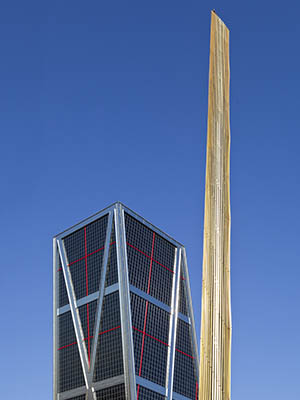
The Calvo Sotelo Monument: a Francoist monument in dispute
Since 1960 the southern side of the square has featured a monument in homage to José Calvo Sotelo, a right-wing politician assassinated on 13 July 1936 during the Second Spanish Republic just five days before the outbreak of the Spanish Civil War.
The piece, by the architect Manuel Manzano Monís and the sculptor Carlos Ferreira, includes an effigy of the honoured figure, a monolith in the shape of a boat’s prow—it symbolises Spain navigating the seas—and two bas-reliefs on the life and assassination of Calvo Sotelo. The monument was erected during the Franco regime to commemorate the 24th anniversary of the assassination of the politician, who Franco considered ‘proto-martyr of the Crusade’ that he led with the uprising against the Republic. It is, therefore, a very controversial work included on the list of Francoist monuments that the current City Council of Madrid, run by a left-wing party, has tried to take down over recent years.
Exhibitions in a former water tank
Around Plaza de Castilla is also the Arte Canal Exhibition Centre, opened in 2004 in a former subterranean water tank belonging to Canal de Isabel II, the company that manages the city’s water supplies. Due to its setting, it is a unique place, whose biggest draw is not just the temporary exhibitions that it hosts but the incredible backdrop: its main room is a former cistern made up of 144 brick arches. The centre has played host to important exhibitions over recent years, such as the famous Terracotta Army from Xi’an and shows on Alexander the Great, Pompeii and the Auschwitz concentration camp.
























































